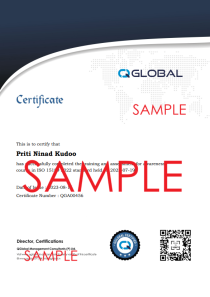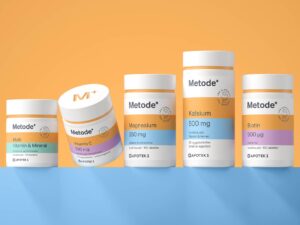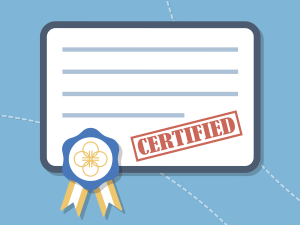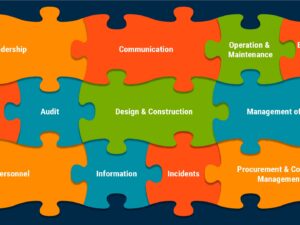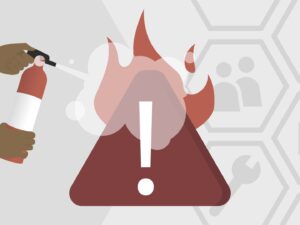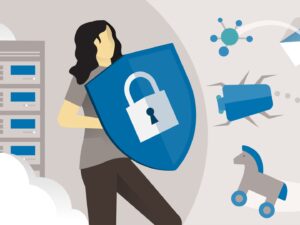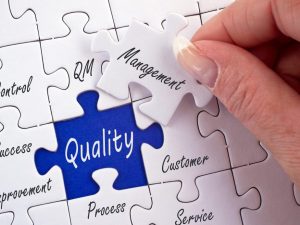AS9100 Rev D Quality Management System - Internal Auditor Course
- Description
- Curriculum

AS9100 is the international Quality Management System standard for the Aviation, Space and Defense (AS&D) industry, created by the IAQG. The standard provides suppliers with requirements for creating and maintaining a comprehensive quality system for providing safe and reliable products to the Aviation, Space and Defense industry, as well as civil & military aviation requirements. AS 9100 includes all the AS 9100 requirements and added requirements determined to be pertinent to the Aviation, Space and Defense industry. AS 9100 is built upon requirements that are set to provide a harmonious global standard that meets the needs and requirements of all aerospace companies worldwide. AS 9100 D internal auditor course will help you learn how to initiate an audit, prepare and conduct audit activities, compile and distribute audit reports and complete follow-up activities. On successful completion of this course, you will be able to optimize your auditing skills with the internationally recognized AS 9100 D standard and boost your audit capabilities. Also gain confidence in planning and performing an effective audit, as well as reporting and taking corrective action where necessary. AS 9100 D internal auditor training course develops the necessary skills to assess and report on the conformance and implementation of processes based on AS 9100 D.
Who Should Attend?
- Anyone involved in the planning, implementing, maintaining, supervising or auditing of an AS 9100 D quality management system
- Those who like to handle the role of an AS 9100 D internal auditor in an organisation
- Employees of any organisation who wish to audit their organisation’s quality management system
- Those involved in second party audits such as vendor audits
- Personnel who wish to pursue career as an AS 9100 D internal auditor
- Expert advisors in quality management
Key Benefits
- Gain the skills to plan, conduct, report and follow up first and second party audits in accordance with ISO 19011
- Learn skills to lead an internal audit team
- Identify the aims and benefits of an AS 9100 D audit
- Interpret AS 9100 D requirements for audit application
- Grasp the application of risk-based thinking, leadership and process management
- Acknowledge the correlation between AS 9100 D standards and other standards and regulatory frameworks
- Learn the latest techniques in AS 9100 D internal auditing
- Consolidate your expertise with the latest developments and contribute to the continuous improvement of the business
Learning & Evaluation Method
This is a live and interactive course. Once you purchase the course, our team will contact you to plan the training. No matter where you are located, we schedule the classes based on your convenience and time zone. You can plan to attend the training in sessions of 4 or 8 hr duration, based on how much time you can spend in a day.
Certification
There are increasing numbers of organizations, who prefer candidates those who have certain certifications from recognized programs. Certification demonstrates your commitment to superior professionalism, upholding industry standards, and continued learning. These merits can help boost your professional credibility and prestige within your own network, in your organisation, with your current clients, and when pursuing new business opportunities. After the successful completion of the course and final exam, you will be awarded with a certificate of completion issued by QGlobal. Your credentials will be made available in the global online directory and can be verified by anyone searching with the certificate number. Without doubt we can say that our training courses are well recognized and sought after by organizations across various geographies.
Buy for group Are you planning to buy this course for a group? We have the best prices for you! Select ‘Buy for Group’ option and add to the cart. You will get a discount of 60 – 75% for a group of up to 10 participants. To make a group purchase, create your group name and add individual emails of up to 10 participants. Each participant will get the access to the course materials, exam and the certificate. We will arrange one live-online session for the entire group.
Total: 206 Courses View all
RELEVANT COURSES
-
1Introduction to standards and certification
- Purpose of standardization
- Benefits of certification
-
2Introduction to AS 9100 Rev D standards
-
3Quality management system principles
- Fundamental concepts
- Quality management system principles
-
4AS 9100 Context of the organization
- Understanding the organization and its context
- Determine external and internal issues
- Monitor and review information about issues
- Understanding the needs and expectations of interested parties
- Identify the interested parties
- Clarify the requirements of interested parties
- Monitor and review information about interested parties and their requirements
- Determining the scope of the quality management system
- Take into account the external and internal issues
- Take into account the requirements of interested parties
- Take into account the products and services
- Apply any requirement of the standard applicable within the scope of the QMS
- Maintain the scope of the QMS as documented information
- Include in the scope of the QMS justification for any requirements which cannot be met
- Quality management system and its processes
- Establish, implement, maintain and improve a process-based QMS
- Determine the needed processes and their application
- Address also customer and applicable statutory and regulatory requirements
- Process documentation
- Establish and maintain documented information that includes a general description of relevant interested parties
- Establish and maintain documented information that includes the scope of the QMS
- Establish and maintain documented information that includes a description of the processes needed for the QMS
- Establish and maintain documented information that includes the sequence and interaction of these processes
- Establish and maintain documented information that includes responsibilities and authorities for these processes
-
5AS 9100 Leadership
- Leadership and commitment
- Customer focus
- Ensure product and service conformity and on-time delivery
- Policy
- Establishing the quality policy
- Communicating the quality policy
- Organizational roles, responsibilities and authorities
- Appoint a management representative
- Have the responsibility and authority to establish and maintain the QMS
- Have the organizational freedom and unrestricted access to top management
-
6AS 9100 Planning
- Actions to address risks and opportunities
- Quality objectives and planning to achieve them
- Planning of changes
-
7AS 9100 Support
- Resources
- People
- Infrastructure
- Environment for the operation of processes
- Monitoring and measuring resources
- Establish, implement and maintain a process for the recall of monitoring and measuring equipment
- Maintain a register of the monitoring and measuring equipment
- Include in the register specific equipment data
- Ensure suitable environmental conditions for carrying out calibration or verification
- Organizational knowledge
- Competence
- Awareness
- Make staff aware of QMS documented information
- Make staff aware of their contribution to product or service conformity
- Make staff aware of their contribution to product safety
- Make staff aware of the importance of ethical behavior
- Communication
- Documented information
- Creating and updating
- Control of documented information
- Prevent unintended use of obsolete documented information
- Define a process for the protection of documented information in electronic form
-
8AS 9100 Operation
- Operational planning and control
- Determine the processes and controls needed to manage critical items
- Engage representatives of affected functions
- Determine the processes and resources
- Determine the products and services to be obtained from external providers
- Establish the controls needed
- Plan and manage product and service provision in a structured and controlled manner
- Establish, implement and maintain a process to transfer of work
- Manage work transfer impacts and risks
- Operational risk assessment
- Plan, implement and control a process for managing operational risks by assignment of responsibilities
- Plan, implement and control a process for managing operational risks by definition of risk assessment criteria
- Plan, implement and control a process for managing operational risks by identification, assessment and communication of risks
- Plan, implement and control a process for managing operational risks by identification, implementation and management of actions
- Plan, implement and control a process for managing operational risks by acceptance of residual risks
- Configuration management
- Plan, implement and control a process for configuration management
- Control product identity and traceability
- Ensure that the documented information is consistent with the actual attributes of the products and services
- Product safety
- Prevention of counterfeit products
- Requirements for products and services
- Customer communication
- Determining the requirements for products and services
- Determine special requirements for products and services
- Identify operational risks
- Review of the requirements for products and services
- Coordinate the review
- Coordinate the review
- Changes to requirements for products and services
- Design and development of products and services
- Design and development planning
- Divide, when appropriate, the design and development effort into distinct activities
- Consider the ability to provide, verify, test and maintain products and services
- Design and development inputs
- Take into account the potential consequences of obsolescence
- Design and development controls
- Authorize progression to the next stage
- Include representatives of functions concerned
- Plan, control, review and document tests necessary for verification and validation
- Ensure and prove that test procedures describe the test methods to be used
- Ensure and prove that the configuration of the test item is correct
- Ensure and prove that the requirements of the test plan are observed
- Ensure and prove that the acceptance criteria are met
- Control monitoring and measuring devices used for testing
- Ensure that reports, calculations, test results, and others are able to demonstrate that the design for the product or service meets the specification requirements for all identified operational conditions
- Design and development outputs
- Specify, as applicable, any critical items and concerned actions to be taken
- Ensure that outputs are approved by authorized person
- Define the data required to allow the product to be identified, manufactured, verified, used and maintained
- Design and development changes
- Implement a process with criteria for notifying its customer about changes that affect customer requirements
- Control design and development changes in accordance with the configuration management process
- Control of externally provided processes, products and services
- General
- Be responsible for the conformity of all externally provided processes, products and services
- Ensure, when required, that customer-designated or approved external providers are used
- Identify and manage the risks associated with the external provision of processes, products and services
- Require that external providers apply appropriate controls to their direct and sub-tier external providers
- Define the process, responsibilities and authority for the approval status decision, changes of the approval status
- Maintain a register of its external providers that includes approval status (approved, conditional, disapproved)
- Periodically review external provider performance
- Define the necessary actions to take when dealing with external providers that do not meet requirements
- Define the requirements for controlling documented information created or retained by external providers
- Type and extent of control
- Take into account the results of the periodic review of external provider performance
- Perform verification activities of externally provided processes, products and services according to the risks identified
- Include inspection or periodic testing, as applicable, when there is high risk of nonconformities
- Identify and record in order to allow recall and replacement if later it is found that the product does not meet requirements
- Define the scope and requirements for delegation for verification activities to the external provider
- Periodically monitor the external provider's delegated verification activities
- Implement a process to evaluate the data in the test reports to confirm that the product meets requirements
- Implement a process to validate the accuracy of test reports
- Information for external providers
- Production and service provision
- Control of production and service provision
- Ensure that documented information for monitoring and measurement activity includes criteria for acceptance or rejection
- Ensure that documented information for monitoring and measurement activity includes stages where the verification operations are to be performed
- Ensure that documented information for monitoring and measurement activity includes measurement results to be obtained
- Ensure that documented information for monitoring and measurement activity includes any specific monitoring and measurement equipment required
- Ensure that when sampling is used as a means of product acceptance, the sampling plan is justified on the basis of recognized statistical principles and appropriate for use
- Include in the controlled conditions the establishment of criteria for workmanship
- Include in the controlled conditions the accountability for all products during production
- Include in the controlled conditions the control and monitoring of identified critical items in accordance with established processes
- Include in the controlled conditions the determination of methods to measure variable data
- Include in the controlled conditions the identification of in-process inspection/verification points
- Include in the controlled conditions the availability of evidence that all production and inspection/verification operations have been completed as planned
- Include in the controlled conditions the provision for the prevention, detection and removal of foreign objects
- Include in the controlled conditions the control and monitoring of utilities and supplies to the extent they affect conformity of product requirements
- Include in the controlled conditions the identification and recording of products released for subsequent production use to allow recall and replacement if it is later found that the product does not meet requirements
- Control of equipment, tools and software programs
- Validation and control of special processes
- Production process verification
- Identification and traceability
- Property belonging to customers or external providers
- Preservation
- Post‐delivery activities
- Control of changes
- Release of products and services
- Control of nonconforming outputs
-
9AS 9100 Performance evaluation
- Monitoring, measurement, analysis and evaluation
- Customer satisfaction
- Analysis and evaluation
- Internal audit
- Management review
- Management review inputs
- Management review outputs
-
10AS 9100 Improvement
- Nonconformity and corrective action
- Continual improvement
-
11Terms and definitions
- Terms related to person or people
- Terms related to organization
- Terms related to activity
- Terms related to process
- Terms related to system
- Terms related to requirement
- Terms related to result
- Terms related to data, information and document
- Terms related to customer
- Terms related to characteristic
- Terms related to determination
- Terms related to action
- Terms related to audit
-
12Introduction to ISO 19011 2018 Guidelines for auditing management systems
- Scope
- Normative references
- Terms and definitions
-
13ISO 19011 Principles of auditing
-
14ISO 19011 Managing an audit program
- Establishing audit programme objectives
- Determining and evaluating audit programme risks and opportunities
- Establishing the audit programme
- Roles and responsibilities of the individual(s) managing the audit programme
- Competence of individual(s) managing audit programme
- Establishing extent of audit programme
- Determining audit programme resources
- Implementing audit programme
- Defining the objectives, scope and criteria for an individual audit
- Selecting and determining audit methods
- Selecting audit team members
- Assigning responsibility for an individual audit to the audit team leader
- Managing audit programme results
- Managing and maintaining audit programme records
- Monitoring audit programme
- Reviewing and improving audit programme
-
15ISO 19011 Conducting an audit
- Initiating audit
- Establishing contact with auditee
- Determining feasibility of audit
- Preparing audit activities
- Performing review of documented information
- Audit planning
- Assigning work to audit team
- Preparing documented information for audit
- Conducting audit activities
- Assigning roles and responsibilities of guides and observers
- Conducting opening meeting
- Communicating during audit
- Audit information availability and access
- Reviewing documented information while conducting audit
- Collecting and verifying information
- Generating audit findings
- Determining audit conclusions
- Conducting closing meeting
- Preparing and distributing audit report
- Preparing audit report
- Distributing audit report
- Completing audit
- Conducting audit follow-up
-
16ISO 19011 Competence and evaluation of auditors
- Determining auditor competence
- Personal behavior
- Knowledge and skills
- Achieving auditor competence
- Achieving audit team leader competence
- Establishing auditor evaluation criteria
- Selecting appropriate auditor evaluation method
- Conducting auditor evaluation
- Maintaining and improving auditor competence

